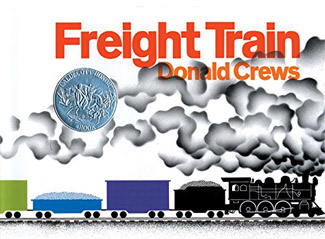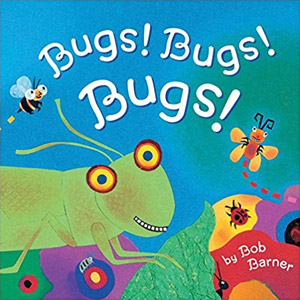Welcome to the 2020 Pennsylvania One Book website
This year, young readers across Pennsylvania will be introduced to two books as part of the 2020 Pennsylvania One Book early literacy program. This year’s selections are:
Freight Train by Donald Crews, for infants and toddlers 
Freight Train is a beloved classic picture book and was awarded a Caldecott Honor Medal in 1979. Donald Crews uses simple words and brightly colored illustrations to bring to life a vehicle that has always fascinated young children. Red caboose at the back, orange tank car, green cattle car, purple box car, black tender and a black steam engine . . . freight train. Color words and content area vocabulary are woven into this timeless picture book in a way that will delight and inform the very young child.
About the Author/Illustrator
Donald Crews is an award-winning American author and illustrator of children’s books. In 2015, the American Library Association honored him with the Laura Ingalls Wilder Medal, recognizing his lasting contribution to children’s literature. He was born in Newark, New Jersey in 1938 and grew up in the greater New York City area. Mr. Crews used childhood memories of trains seen during his travels to his grandparents’ farm in Cottondale, Florida as the inspiration for his timeless classic, Freight Train.
Bugs! Bugs! Bugs! by Bob Barner, for children ages three to six
Note: This book is also available on BookFlix. Ask your local library for more information about getting connected.
Bugs! Bugs! Bugs! engages young children with rhythmic, rhyming text and playful, colorful illustrations of bugs, as well as a Bug-O-Meter, listing interesting facts about each creature. This book is sure to entertain and inform preschoolers about the fascinating world of bugs!
About the Author/Illustrator
Bob Barner, the creator of this engaging picture book, has loved drawing since he was three years old. He published his first children’s book in 1975 and has since published over 30 others. He has won the Parents’ Choice Award and the Teachers’ Choice Award and was honored as a San Francisco Library Laureate in 2004. You can visit his website to learn more about Bob Barner and his many wonderful books.
Fun Guides, which contain activities that align with the Pennsylvania Standards for Early Childhood, are available for BOTH books on this site – as well as activity guides and many other resources created during the last 14 years of the program.
In order to get more books into the hands and homes of more children, PA One Book is working with the Scholastic Literacy Partnerships so early learning programs, libraries and community partners can purchase the paperback books from this program. If you would like to join the program, download the membership brochure here. If you are an individual, please feel free to purchase a copy from your local bookstore or online retailer.
We hope you enjoy this year’s book selections!
Early Literacy is Important!
Pennsylvania One Book is an established program that highlights the importance of early literacy development in preschoolers and the significance of reading early and often to children.
Facts about the importance of language and reading
- Ninety percent of a child’s brain growth occurs during birth and 4 years of age, so it is suggested that parents begin reading to their child at birth.
- When we read picture books to children, researchers have found that 95 percent of their attention is on the pictures. By occasionally pointing to the words in the book, you are helping them realize that it is the text we are reading, not the pictures.
- Research has shown that children who play with sounds of words in the preschool years are better prepared to read when they get to school.
- The language used in story books is different from what we use when we are speaking. Stories also have a certain structure with a beginning, middle and an end.
- Reading aloud introduces the patterns of language and develops vocabulary.
- Reading to a child just 20 minutes each day will enable him or her to hear 1 million words in a year and will expand his or her vocabulary by 1,000 words.
- Acting out stories or parts of them, having young children use their whole bodies, helps them internalize and understand what is happening in the story.
- Reading aloud helps a child develop a longer attention span and encourages the art of listening.
- Sharing stories introduces and keeps alive the cultural heritage of our own traditional tales and those of other cultures.
- Rhyming is one way that children learn to hear that words are made up of smaller parts.
- Writing can be very motivating. It helps children make the connection between the spoken and the written word. Writing begins with scribbles and develops into the ability to write letters.
- By using specific names for things, like cat and kitten, not only helps children learn new words, it also helps them understand differences between similar things.